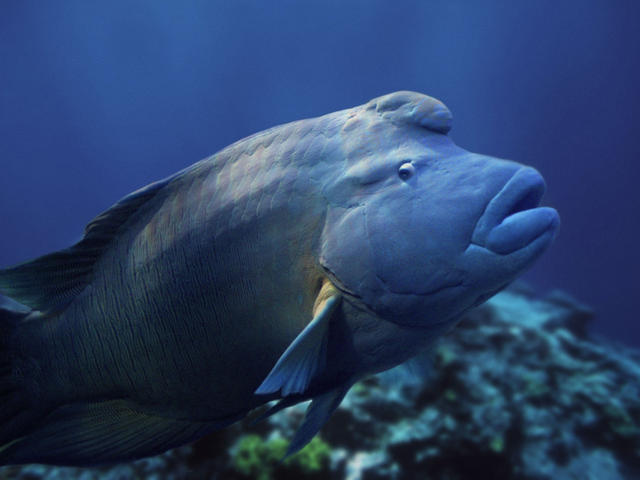It ought to cause a twinge and a shudder to read about what
is happening to the humphead
wrasse. There is an urgent need
to become more aware of this. I hope you
will find more reasons to learn more about them and also increase your
understanding and loving the environment.
The humphead wrasse can grow to over six feet long,
making it a huge coral reef fish. It has a prominent bulge on its forehead,
hence the name humphead. Some of them live to be over 30 years old. They search
the coral reefs for filling their diet of hard shelled prey such as mollusks,
starfish, or crustaceans. Their
diet includes several toxic species, such as sea hares, boxfish and the
crown-of-thorns starfish which is known
to destroy coral reefs, marking one good reason why conservation of the humphead
wrasse is so important.
The main threat to the humphead wrasse is over fishing. The
species is much sought after, particularly for the restaurant industry.
One way of catching the humphead wrasse alive is to stun it with
a poisonous substance like cyanide. The poison is sprayed into the fish’s
habitat. In trying to protect itself the
wrasse often hides in a crevice or hole in the coral and becomes sluggish as
the poison takes hold. This makes it easy for the fishermen to capture it but
often the coral reef is broken away in the process. Consequently,
their habitat is also threatened. It is estimated that a quarter of the world’s coral
reefs are irreparably damaged and that another two thirds are under threat.
In addition to the loss of habitat affecting their numbers, the humphead wrasse
takes several years to reach sexual maturity, so the over fishing has a devastating effect on the
population as well.
The World Conservation Union's (IUCN)
Groupers and Wrasses Specialist Group is working to collect this all-important
data and to raise awareness of the issues involved throughout the region. The
species is partially protected in areas of Australia, the Philippines, the
Maldives and Palau. Government and other groups are working to protect the
humphead wrasse. I hope that this information
causes a very strong desire for all to help.
It does for me.


No comments:
Post a Comment